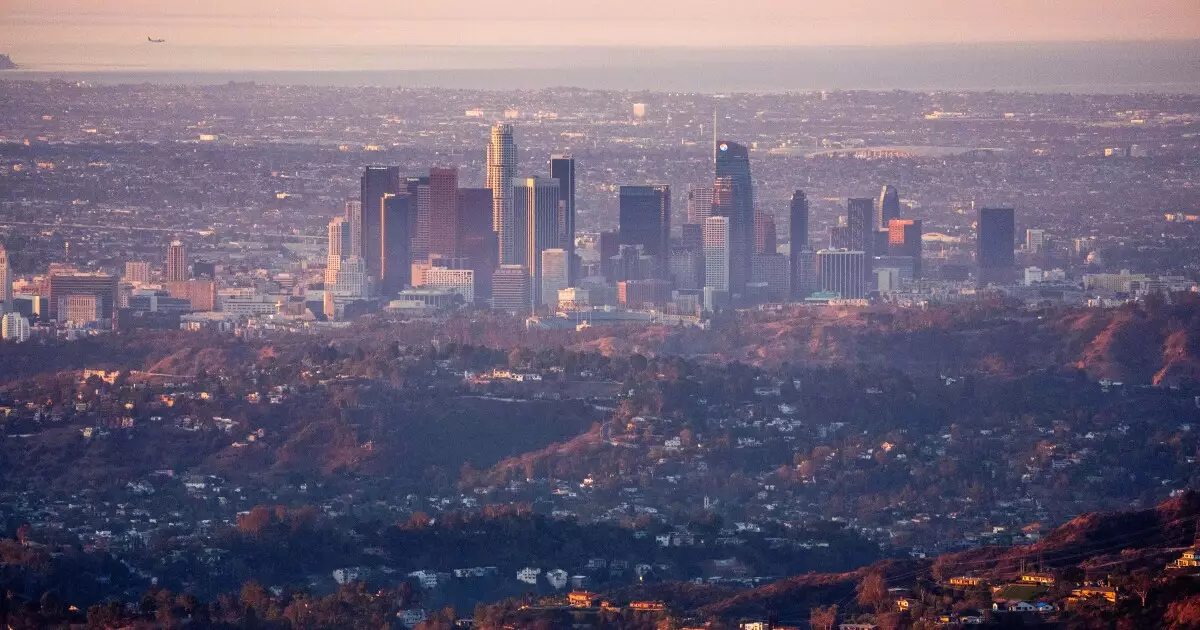In recent years, the destructive power of wildfires has transcended the physical realm, seeping into the core of our financial systems and community stability. While headlines often focus on the immediate toll—destroyed homes, loss of lives—the insidious economic implications often go unnoticed until they manifest in the cost of borrowing for public entities. A pioneering study presented at the Brookings Institute revealed that wildfire risks are now directly influencing the borrowing costs of school districts, a reality that exposes vulnerabilities in our fiscal framework and warns of systemic instability. This isn’t merely about insurance premiums or immediate destruction; it is about the perceived future risks that investors incorporate into bond pricing, signaling a broader crisis of climate-induced economic insecurity.
Wildfires are no longer just natural disasters—they have become indicators of future risks woven into the fabric of municipal finance. When investors demand higher yields for bonds issued by fire-prone school districts, they are effectively pricing in a future where wildfire damage could impair community services, strain local budgets, or even threaten the viability of schools themselves. This shift in bond spreads—by as much as 26 basis points in secondary markets—serves as a stark reminder that climate change isn’t an abstract threat; it is a tangible financial risk that’s already impacting community infrastructure funding and, by extension, the social fabric of vulnerable areas.
Unveiling the Economic Toll of Wildfires on Local Governments
The numbers paint a sobering picture. The study’s focus on over 150,000 bonds across eleven wildfire-prone states reveals that the cost of climate risks is heavily concentrated on regions where disadvantaged communities often reside. These areas tend to rely disproportionately on local revenue streams, making them inherently more susceptible to increases in borrowing costs. When bond spreads increase by 14 to 26 basis points, it amplifies the financial burdens imposed on already strained education budgets.
More critically, these rising costs signal that climate risks are not distant or future concerns—they are ongoing, well-embedded in the current economic landscape. The financial market’s response indicates a recognition that wildfires will continue to escalate due to climate change, particularly in an era where federal assistance mechanisms like FEMA—the primary disaster response agency—face potential dismantling or reduced efficacy. This erosion of federal support makes municipal bonds even riskier and more expensive, forcing vulnerable communities into a vicious cycle of rising debt costs and declining resilience.
However, some experts argue that these risks are often underpriced or overlooked entirely. The absence of significant risk premiums in broader studies hints at a systemic underestimation of climate risks, which could lead to abrupt and destabilizing market corrections when the true costs become undeniable. As we approach 2025—the projected peak of wildfire activity in California—those risks are expected to be factored into bond markets with even more force, further burdening taxpayers and local governments.
Wildfire Preparedness as a Financial Opportunity
Given these realities, reliance solely on traditional risk assessment is perilous. Instead, there should be a strategic shift towards innovative financial instruments—so-called “adaptation bonds”—designed specifically to fund wildfire preparedness and resilience efforts. Governments and communities must view these bonds not as expenditures but as investments — tools that can reduce future costs and mitigate risk exposure.
Investing in proactive wildfire mitigation measures and infrastructure resilience is critical. These investments can lower the perceived risk premium, easing the financial burden on school districts and local governments. Yet, the current approach often misses the opportunity to embed climate risk management into the core fabric of municipal finance.
The urgency for action is accelerated by recent wildfire events, which underscore that climate risks are not theoretical but immediate. The fires projected for Los Angeles in 2025, with estimated insured losses reaching $75 billion, are proof that climate change’s economic footprint is expanding rapidly. If local governments and financial markets fail to integrate this understanding, the cost of inaction will be borne by taxpayers, students, and future generations.
A Call for Responsible Capitalism in a Climate-Impacted Age
This crisis calls for a pragmatic, yet forward-thinking approach to public finance—a middle ground that recognizes climate risks without succumbing to alarmism or policy paralysis. Market signals, such as higher bond spreads or more frequent rating downgrades, serve as vital alerts that climate risks are now a core element of investment analysis. Responsible policymakers and investors must acknowledge that ignoring these signals fuels uncertainty, increases costs, and leaves communities exposed to avoidable disasters.
Furthermore, the potential reduction of federal disaster support throws into sharp relief the necessity for local governments to take ownership of climate resilience. Climate adaptation shouldn’t be viewed as an optional expense; it must be an integral part of fiscal planning. With sound policies and innovative financial tools, communities can bolster their defenses, soften the blow of future wildfires, and ensure that their economic vitality persists amid escalating climate threats.
Wildfires and climate change are challenging the very foundations of municipal finance and community stability. But with deliberate action, responsible investments, and a willingness to rethink traditional risk assessment, we have an opportunity—not just to weather the storm but to emerge with a more resilient, sustainable system that aligns economic interests with ecological necessity. The question remains: will we act before the flames force us to pay an even higher price?

